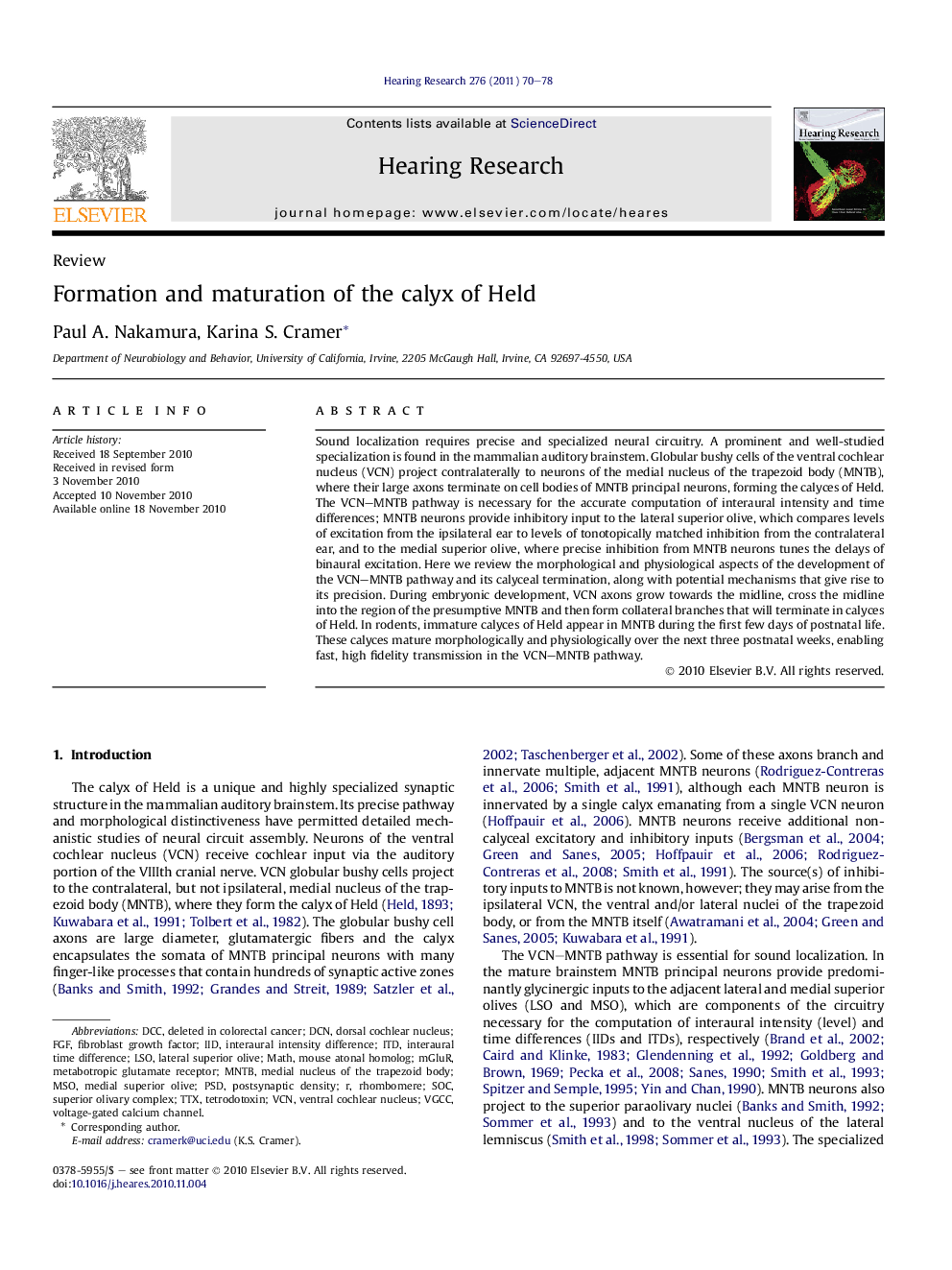| کد مقاله | کد نشریه | سال انتشار | مقاله انگلیسی | نسخه تمام متن |
|---|---|---|---|---|
| 4355574 | 1615624 | 2011 | 9 صفحه PDF | دانلود رایگان |

Sound localization requires precise and specialized neural circuitry. A prominent and well-studied specialization is found in the mammalian auditory brainstem. Globular bushy cells of the ventral cochlear nucleus (VCN) project contralaterally to neurons of the medial nucleus of the trapezoid body (MNTB), where their large axons terminate on cell bodies of MNTB principal neurons, forming the calyces of Held. The VCN–MNTB pathway is necessary for the accurate computation of interaural intensity and time differences; MNTB neurons provide inhibitory input to the lateral superior olive, which compares levels of excitation from the ipsilateral ear to levels of tonotopically matched inhibition from the contralateral ear, and to the medial superior olive, where precise inhibition from MNTB neurons tunes the delays of binaural excitation. Here we review the morphological and physiological aspects of the development of the VCN–MNTB pathway and its calyceal termination, along with potential mechanisms that give rise to its precision. During embryonic development, VCN axons grow towards the midline, cross the midline into the region of the presumptive MNTB and then form collateral branches that will terminate in calyces of Held. In rodents, immature calyces of Held appear in MNTB during the first few days of postnatal life. These calyces mature morphologically and physiologically over the next three postnatal weeks, enabling fast, high fidelity transmission in the VCN–MNTB pathway.
► Midline attraction regulates growth of VCN axons.
► Formation of strictly contralateral VCN–MNTB projections requires Eph signaling.
► Physiological properties of calyx of Held mature in the postnatal period.
Journal: Hearing Research - Volume 276, Issues 1–2, June 2011, Pages 70–78